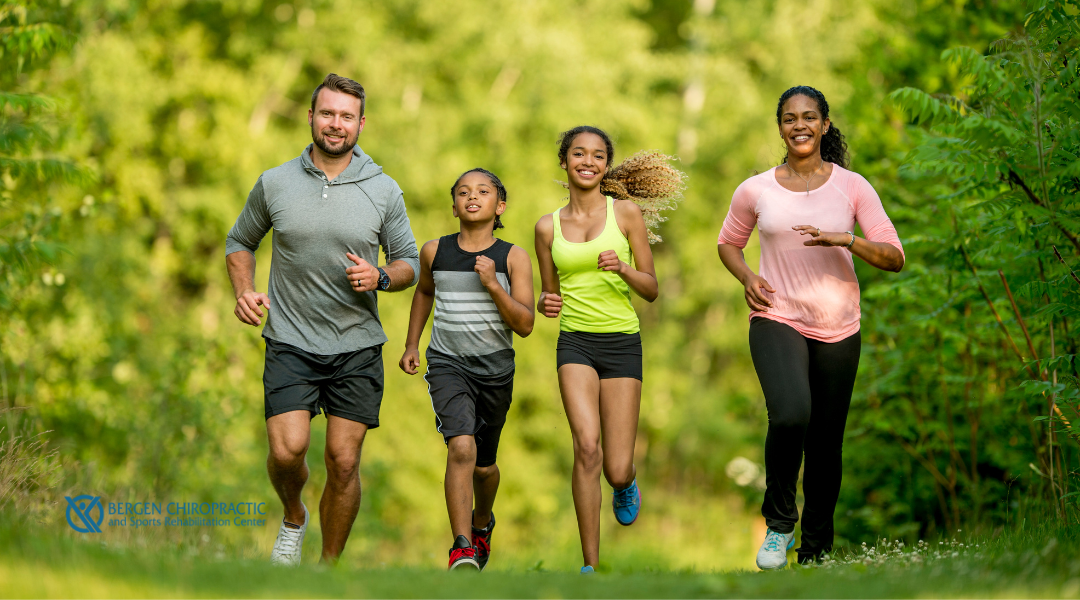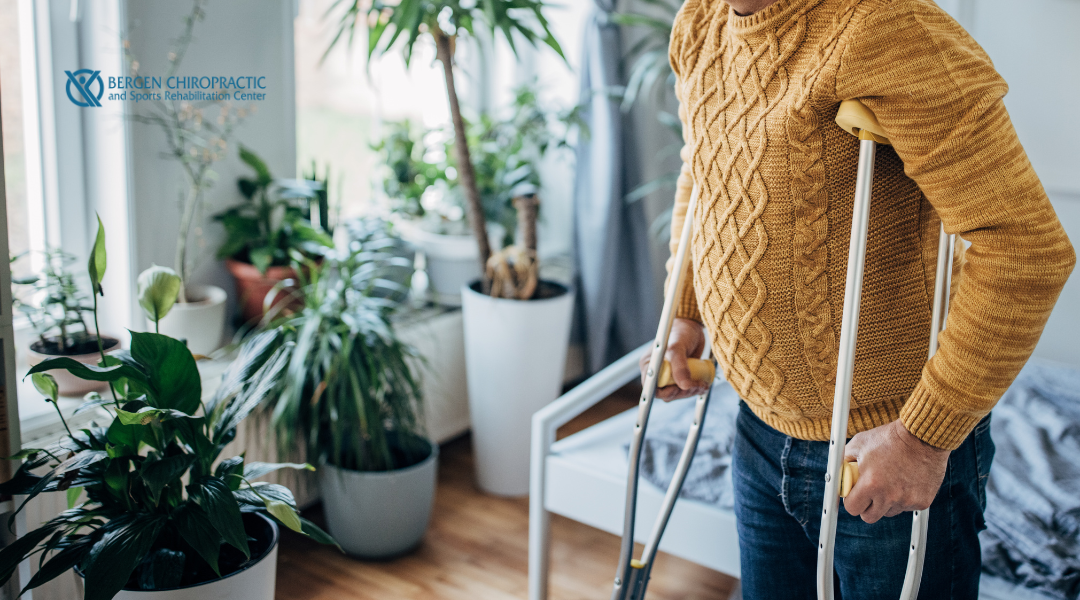Today, we are going to talk about AC sprains. We get this question frequently here at Bergen Chiropractic because they are prevalent injuries, especially among athletes. To understand how to treat AC sprains, let’s take a step back and discuss what an AC sprain is.
What is an AC Sprain, and How Do They Occur?
AC sprains, also known as shoulder separations, are caused by trauma to the ligaments that connect part of the shoulder blade (acromion process) and the clavicle (collar bone). The AC joint consists of ligaments connecting the two bones, the cartilage covering these bones at the connection point, and fluid sacks that cushion the weight-bearing forces. If too much force is applied to the AC joint beyond its capacity, damage can occur. For example, this can happen when you fall and land on your shoulder.
What Is the Most Common Cause of AC Joint Pain?
AC sprains are usually caused by falls on an outstretched arm or contact with another individual or object while the arm is elevated above shoulder height. Athletes who participate in sports that involve frequent contact with other players are more susceptible to AC injuries. Collisions during sports such as football, ice hockey, and lacrosse account for many AC joint injuries among athletes. The most common cause of AC joint pain is a sprain (when ligaments tear or overstretch). However, fractures or breaks in the bone can also cause AC sprains. Fractures and breaks require more immediate medical attention than sprains do, as they can produce more severe symptoms, including loss of movement.
What Are the Different Types of AC Joint Injuries?
There are different AC joint injuries, depending on their severity and damage to the supporting structures. For example, a tear on the acromioclavicular ligament won’t cause much harm, but when a tear occurs on the coracoclavicular ligaments, the entire shoulder unit is affected through dislocation or separation. Basic AC injuries are divided into three categories, ranging from minor dislocations to complete separations:
Grade 1 AC Joint Injury
A grade 1 injury involves a sprain, stretch, or partial tear of the acromioclavicular ligament. This causes tenderness in the AC joint that is accompanied by mild swelling. Grade 1 AC joint sprains usually heal within three weeks.
Grade 2 AC Joint Injury
A grade 2 injury involves a complete rupture of the acromioclavicular ligament and a partial tear of the coracoclavicular ligament. Because the clavicle is torn, it rises and results in a more prominent bump on the shoulder. As a result, pain is more severe, and movement of the shoulder is restricted. Grade 2 AC joint injuries could take a minimum of four to six weeks to heal.
Grade 3 AC Joint Injury
A grade 3 injury involves the complete rupture of the acromioclavicular and coracoclavicular ligaments. The bump visible in a grade 2 tear is even more pronounced in a grade 3 injury due to complete dislocation of the acromioclavicular joint. Grade 3 injuries are more severe and may even need surgery in some cases. The recovery time for Grade 3 AC joint injuries can take a few months.
Best Exercises for Recovery from AC Joint Injuries
Once you no longer feel pain when moving your shoulders, you can begin exercising to regain joint strength and mobility. If the shoulder’s range of motion has been restricted, pendulum exercises are an excellent place to start. Front shoulder stretches and external rotation stretches can help ease motion back into your shoulders as well. To strengthen your shoulder muscles, you can do a series of isometric exercises, which means contracting your muscles without movement. Using a resistance band is ideal for isometric exercises and can help speed up the recovery.
We’re Looking Forward to Helping You at Our Chiropractic Offices in NJ!
However, if you want to go the extra mile on your road to recovery, seeking chiropractic care is highly recommended, as your chiropractor can find the best treatment and rehab procedures to relieve your pain. At the Bergen Chiropractic and Sports Rehabilitation Center, our chiropractic team, led by Dr. Gregory Doerr, uses a variety of soft tissue (FAKTR, Graston Technique, Active Release), taping techniques to relieve pain and assist with ROM, rehab procedures to relieve the symptoms and stabilize the region and when appropriate manipulation/mobilization especially to the thoracic spine and scapula. Our mission is to provide unparalleled patient care and services in a comfortable healing atmosphere.
At the Bergen Chiropractic and Sports Rehabilitation Center, our chiropractic team, led by Dr. Gregory Doerr, follows the highest and most professional medical standards to provide superior chiropractic help. After all, our mission is to provide unparalleled patient care and services in a comfortable healing atmosphere. Contact us to learn more about our chiropractic services! Our chiropractic offices in Cliffside Park, NJ, and Hackensack, NJ, are ready to welcome you!








